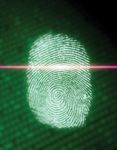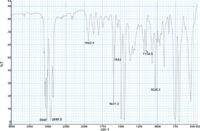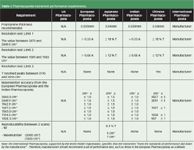FT-IR Identification: the Expertise Required To Ensure Compliance
Pharmaceutical Technology Europe
By providing an information "fingerprint", infrared red spectroscopy is a useful tool for identifying counterfeit pharmaceuticals. The authors identify best practices for ensuring compliance.
Counterfeiting in the pharmaceutical industry is predicted to reach a value of approximately €52 billion in 2011 (1) and this threat has influenced the development of a range of measures to secure the supply chain and protect patients. One technology that can be useful for identifying counterfeit medicines is infrared spectroscopy, which provides a rapid fingerprint of information that allows a suspect drug to be compared with an authentic one. Indeed, the ease of sample preparation and rich content of an infrared spectrum means that infrared spectroscopy is "the first port of call in identifying counterfeit medicines" (2, 3).

(SUK-HEUI PARK/GETTY IMAGES)
Interpreting the differences between infrared spectra requires a good understanding of the technique. For "routine" verification, where infrared is used to confirm the identity of a raw material or material produced from a validated manufacturing process, warning letters issued by the FDA have highlighted fundamental failures in meaningful use of infrared due to poor understanding of the technique (4, 5).
Material identification is a fundamental strength of Fourier Transform Infrared (FT-IR) analysis and the technique can be used for many applications. Because quantitative analysis can be performed by infrared, measurement of the amount of material present is possible (6). To identify gaseous species in counterfeit drugs, hyphenated techniques such as Thermogravimetric (TG)-IR may be used. For drug distribution in a tablet, however, which is the property of a manufacturing process, infrared can be used. The United States Pharmacopoeia (USP) general chapter on "Spectrophotometric Identification Tests" <197> states: "The IR absorption spectrum of a substance, compared with that obtained concomitantly for the corresponding USP reference standard, provides perhaps the most conclusive evidence of the identity of the substance that can be realized from any single test" (7). The strength of this statement has given rise to much interest in FT-IR identification within the pharmaceutical industry.
Although instrumentation and software for infrared spectroscopy have continued to evolve, the loss of specialist spectroscopy knowledge in companies is a concern. Coupled with confusion over what is required by different pharmacopoeias, this lack of understanding has led to regulatory compliance issues. According to FDA warning letters: "This practice is unacceptable and raises serious concerns regarding the integrity and reliability of the laboratory analysis conducted by your firm." (8)
Infrared identification
With sufficient experience and reference texts such as Bellamy, and Colthup et al. (9–11), an infrared spectrum can be interpreted to identify which functional groups are present in the compound under examination. In order to identify a material, however, its infrared spectrum must be compared to one previously recorded.
Compliance with the respective national pharmacopoeia is a requirement when supplying pharmaceuticals in a country. There are at least 42 national pharmacopoeias (12), all of which assume that identification is performed by Chemical Reference Material or Certified Reference Spectrum. Some pharmacopoeias contain infrared reference spectra that can be used for "pharmacopoeial-compliant" identification. The European Pharmacopoeia (EP) supports the use of reference spectra, but does not include them, while the USP does not support identification by reference spectrum, making the clear statement in General Chapter <197> that the corresponding USP reference standard must be used and recorded "concomitantly" (7) Warning letters issued by the FDA include citations for not using USP reference materials, with one recent letter highlighting that the use of a reference spectrum from the Chinese Pharmacopoeia is unacceptable (13,14). Each pharmacopoeia requires the use of chemical reference materials from that particular pharmacopoeia.
When a reference spectrum is used or generated within a laboratory, there are two essential requirements that must be satisfied for reduced compliance risk when using infrared. Firstly, the spectrum of the reference material should be of the appropriate quality—this should be verified and documented. The reference spectrum will be used to compare batches of material so it is essential that it is a good quality spectrum. The second requirement is that where an external reference spectrum is used for identification, it should be justified and documented by a supervisor or laboratory manager so that both the spectrum source and the appropriate use of the spectrum are approved by a qualified person. The first point is significant because traditional techniques of sample preparation for solids, such as the preparation of alkali halide disks (USP <197K>) or mineral oil mulls (USP<197M>) (7), are variable, and the quality of the infrared spectrum obtained will depend on the skill and experience of the analyst.
One technology that has had a huge impact on sample preparation for infrared is high-pressure attenuated total reflectance (ATR) technology, which enables good-quality infrared spectra to be recorded on a wide range of materials in a short space of time. Additionally, for solid powders, the variations in spectra due to grinding or the application of high pressure are removed because quality spectra can be obtained directly by pressing the powder into contact with the ATR crystal. The increased productivity and consistency of this approach—the same technique can be applied to a range of material types—has transformed sample preparation. These advantages are highly applicable when checking for counterfeit drugs, as larger numbers of samples can be screened effectively. The USP actively supports the use of the newer ATR technology: USP <851> states: "A particularly common technique used for IR reflectance measurements is termed attenuated total reflectance (ATR)."(15) USP <197> adds: "The ATR <197A> and the <197E> techniques can be used as alternative methods for <197K>, <197M>, <197F>, and <197S> where testing is performed qualitatively and the Reference Spectra are similarly obtained." (7)
However, this is not the case for the other pharmacopoeias. Of those reviewed in this article, the USP is the only one that documents the equivalency of ATR.
Instrument performance
Before FT-IR instruments existed, it was considered good science to record the infrared spectrum of a material in two stages: firstly, record and plot the sample spectrum and scan the chart back; secondly, overlay some of the peaks from a polystyrene sample. The partially plotted polystyrene peaks over the sample spectrum made it easy to see the accuracy of the wavenumber positions. For the Indian Pharmacopoeia (IP), this was a requirement as recently as the 2007 edition, but, as with the other pharmacopoeias reviewed in this article, this requirement has now been dropped.
Although there is no simple ideal calibration standard, polystyrene is cited in pharmacopoeias, has been widely used and has certified reference standards readily available (16). An FT-IR spectrum of polystyrene is shown in Figure 1 and Table I compares the instrument requirements specified in a range of pharmacopoeias.

Figure 1: Example a Fourier transform infrared spectrum of polystyrene (recorded at 4 cm-1 resolution).
The International Pharmacopoeia (Int. Ph) proposes the use of manufacturers' recommendations for instrument performance. The USP does not currently specify instrument performance criteria, but several FDA warning letters have been issued to companies for failure to calibrate FT-IR instruments (citing 21CFR211.160 (b)) (16–20). This is a commercially-sensitive issue for instrument manufacturers who supply to the US because customers often question whether an instrument is "USP compliant". Only the Japanese Pharmacopoeia (JP) includes a requirement to verify the reproducibility of the instrument. Where specified, there is good agreement between the pharmacopoeias for wavelength performance.

Table I: Pharmacopoeia instrument performance requirements.
The polystyrene peaks referenced in wavelength calibration are shown in Table I, along with their acceptance criteria. The JP, EP and IP currently include the weak, broad peak at approximately 1943 cm-1 as a requirement in wavelength testing. This peak is associated with the overtones and combination bands of the aromatic ring (6), but was originally not a peak certified in the National Institute of Standards and Technology (NIST) 1921b standard. NIST now include this calibration peak in certified standards, but because of its weak, broad nature and greater uncertainty of measurement, its suitability as a calibration peak is questionable. NIST limit the use of this peak to certain peak position measurement algorithms.
Some of the polystyrene peaks are sensitive to instrument resolution, which make them a good choice for resolution verification. However, a dispersive infrared will give over 12% transmission for resolution limit 2 in Table I. For an FT instrument, this value is closer to 10% T at 4 cm-1 resolution. The only way to guarantee a passing limit of 12% T for an FT-IR instrument is to scan at higher resolution. Historically, many pharmaceutical companies gathered evidence to support a 10% T value for limit 2 through a round-robin exercise of sending a polystyrene sample to many sites to record a spectrum, confirm the limit and justify the use of 10%T for this limit. In principle, recording all spectra at a higher resolution is simple and should not be a problem for FT-IR instruments. However, many commercial and historical spectra, including some of those in the pharmacopoeias, have been recorded at a resolution of 4 cm-1 —scanning at a different resolution would cause compatibility problems. A scientific solution to this problem would be to change the values in the pharmacopoeias to what can be achieved at 4 cm-1 in an FT-IR. Resolution limit 3 is only specified in the Chinese Pharmacopoeia (CP) and is satisfied at a resolution of 4 cm-1 . In these instances, the International Conference on Harmonisation (ICH) guidelines of infrared requirements between Pharmacopoeias for infrared identification would be useful because they would clarify what was required, and help to ensure both a consistent approach and simplify understanding across the pharmacopoeias.
Pharmacopoeia comparison
Table II compares the infrared identification requirements for six pharmacopoeias. A key point to note about all the pharmacopoeias is that where a sample spectrum contains differences relative to the reference spectrum being used, it is generally assumed that these may be attributed to the presence of another crystalline form, with typical wording (USP): "If a difference appears in the IR spectra of the analyte and the standard, dissolve equal portions of the test specimen and the reference standard in equal volumes of a suitable solvent, evaporate the solution to dryness in similar containers under identical conditions, and repeat the test on the residues" (15).

Table II: Pharmacopoeia infrared identification requirements.
This fact in itself, or the resulting action that should be taken where spectra show a difference, is not universally known. One of the uncertainties is: how significant must the difference be before it is acted upon? There is no simple answer to this question; however, sample preparation, such as grinding, can affect the appearance of the infrared spectrum of a solid. This impact should be documented because it can help defend an auditor with a strong interest in infrared (18, 19). Additionally, examining infrared spectra in detail helps analysts to gain an understanding of what information a spectrum contains, which could help prevent instances where infrared is used incorrectly, or where the spectra between several chemically-related materials are identical (20–22). The use of dedicated identification software, specifically developed for the pharma industry, can also help to reduce the risk of such gross errors.
Compliance differences
The USP provides a mechanism for using ATR as an alternative to other forms of sample preparation. For other pharmacopoeias, the justification for using ATR as an alternative sample preparation technique must be provided by the company that wants to use this method (discussed later). Does this mean that ATR can be adopted within the pharmacopoeial requirements? In part, it depends on what level of detail a company has registered. The mechanism for making changes to registered processes depends on the level of the difference being made. There are generally three types of regulatory change approval:
- major change—prior approval required (e.g., pre-approval inspection)
- moderate change—period of notification required
- minor change—make the change and then tell them.
A change of sample preparation would be classed as a minor change. In Europe, this would be a Type 1A change under the centralised new variation scheme (e.g., a minor change). In the US, it could be included in an annual update if identification by infrared had also specified sample preparation in the registration.
However, what about using ATR instead of what is in the pharmacopoeias, such as the EP? At this point, it is worth noting that pharmacopoeia monographs are standards and not release tests (23). Where there is an appropriate scientific justification, the use of alternatives to the pharmacopoeias has been accepted. The three steps that would need to be put in place to develop ATR as an alternative sample preparation are:
- Justification—to overcome problems of variation in sample preparation.
- Documentation of equivalence between the tests—for identification.
- If tested, would it pass?
For fundamental justification, the use of ATR for sample preparation overcomes the problems of recording good quality spectra by KBr disk or Nujol mull, and the fundamental inconsistency of variation of sample preparation (hand grinding the sample with a mortar and pestle in particular) between analysts. For the documentation of equivalence, it is necessary to use the method stated in the pharmacopoeia and then ATR, using the same reference material and sample. This would document the equivalence of infrared identification using ATR.
Future FT-IR
FT-IR within the pharma industry is being increasingly performed by analysts who are not specialists and who tend to use the technique only occasionally (24). This subject was raised by UK spectroscopist Geoff Dent over 15 years ago when he wrote an open letter to Spectrochemica Acta on the subject of loss of infrared expertise (25). This trend has continued and has pushed instrument manufacturers to produce more powerful and user-friendly software. Software now includes verification that the ATR accessory is not contaminated (from the previous sample for example) and automated removal of atmospheric water vapour peaks. The infrared software can also be configured to perform material identification using spectral comparison.
Application specialists at instrument companies have increasingly taken on the critical knowledge and technical role of the former in-house infrared spectroscopist. There is now a need for intelligent instruments that can perform self-diagnostic tests, receive a remote diagnostic connection for instrument fault determination, or even provide user-guided self installation to satisfy instrument qualification requirements. Software architecture can now include simple updates if limits in pharmacopeia requirements change. Additionally, the user-friendly interfaces with guided help and video tutorials mean that occasional users are much less likely to make errors. This, in turn, reduces the burden of compliance risk of a regulatory issue by the FDA during an inspection. Similarly, less experienced users can record infrared spectra for anti-counterfeiting applications while reducing the compliance burden on pharmaceutical companies with respect to regulated FT-IR testing for material identification.
Paul Smith is validation programme manager (Europe) at PerkinElmer.
Dr Jerry Sellors is IR business manager, analytical sciences and laboratory services, PerkinElmer.
References
1. R. ColliaSuzuki, "The War Against Counterfeit Drugs", PharmaceuticalTechnology (31 March 2011).
2. B. Perks, "Faking it", Chemistry World 8(1), (January 2011).
3. P. Coombes, "Advances in technology in the fight against counterfeiting", BNET website (January/February 2011).
4. FDA, FDA Warning Letter KAN 2011-02 (8 November 2010).
5. FDA, FDA Warning Letter NYK 2011-09 (10 November 2010).
6. P. Smith, "Analysis of Crosslinked polystyrene based polymers using FT-IR/Raman Spectroscopy", MSc Thesis, (Birckbeck College, University of London, UK, 1989).
7. USP 34–NF 29 General Chapter <197>, "Spectrophotometric Identification Tests".
8. FDA, FDA Warning Letter WL-310-10-01 (28 January 2010).
9. L.J. Bellamy, The Infrared Spectra of Complex Molecules, Volume One (Chapman & Hall Ltd, UK, 3rd ed., 1975).
10. L.J. Bellamy, The Infrared Spectra of Complex Molecule, Volume Two (Chapman & Hall Ltd, UK, 2nd ed., 1980).
11. D. Lin-Vien et al., The Handbook of Infrared and Raman Characteristic Frequencies of Organic Molecules (Academic Press, UK, 1991).
12. World Health Organisation (WHO), "Index of Pharmacopoeias" (2004).
www.who.int, accessed 16 August 2011.
13. FDA, FDA Warning Letter WL:320-11-01 (15 October 2010).
14. FDA, FDA Warning Letter WL:320-10-005 (13 May 2010).
15. USP 34–NF 29 General Chapter <851>, "Spectrophotometry and Light Scattering".
16. Handbook of Vibrational Spectroscopy, John Chalmers and Peter Griffiths, Eds. (John Wiley & Sons, Ltd, UK 2001).
17. FDA, FDA Warning Letter CIN-11-108087-01 (12 October 2010).
18. FDA, FDA Warning Letter W/L 05/03 (29 October 2002).
19. FDA, FDA Warning Letter 10-ATL-06 (9 December 2009).
20. FDA, FDA Warning Letter 2008-DAL-WL-10 (8 May 2008).
21. FDA, FDA Warning Letter 2008-DAL-WL-03 (31 October 2008).
22. FDA Warning Letter 2009-NOL-17 (21 August 2009).
23. L. Torbeck, Pharmaceutical Technology 29(2) (2005).
24. A. De Palma, "FTIR Spectroscopy: Picking up steam in Nontraditional Markets", Lab Manager (5 July 2010).
25. G. Dent, "The gap between experienced spectroscopist and part time users", Letter to Spectrochimica Acta. (1995).
